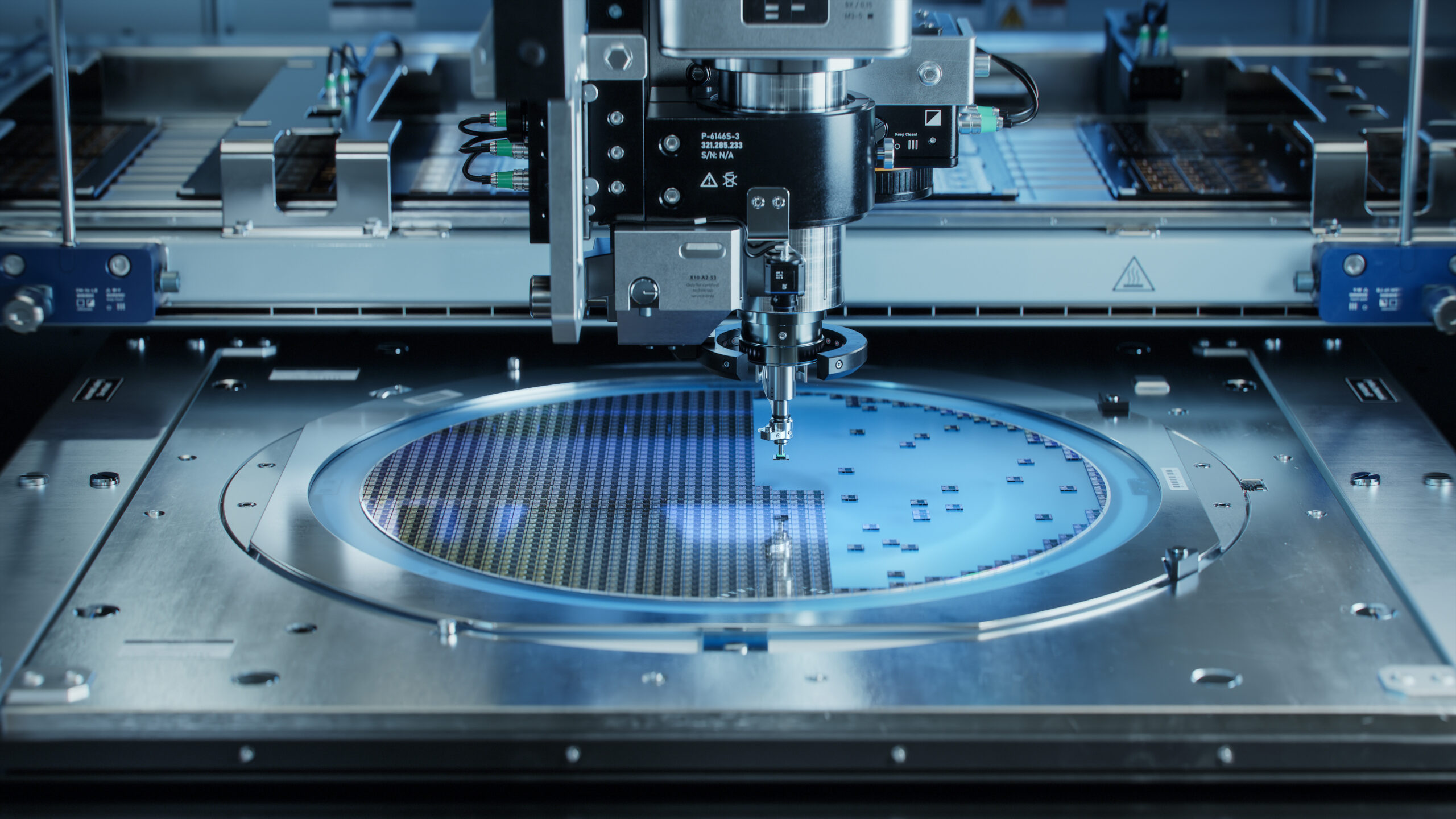How Wide Bandgap (WBG) Works
Compared to traditional silicon semiconductors, electrical current applied to WBG semiconductors doesn't excite as many electrons across the gap — enabling finer control over the flow of electrons.
Semiconductors are materials that can allow electricity to flow more readily than insulators — but less readily than conductors. This property makes semiconductors extremely useful for fabricating power electronic chips that control and convert electrical power — adjusting voltage, current and frequency as needed to run a range of equipment and computer applications.
WBG semiconductors have bandgaps that are significantly greater than those of traditional silicon semiconductors. A “bandgap” is the amount of energy needed to release electrons in semiconductor materials so that the electrons can move freely — allowing electricity to flow.
Compared to traditional silicon semiconductors, electrical current applied to WBG semiconductors excites fewer electrons across the gap, enabling superior current control and reducing energy losses. Along with other properties, this is how WBG semiconductors enable faster, smaller, more reliable and more efficient power electronic devices.
Material Properties of Silicon, Silicon Carbide, and Gallium Nitride
The values in the table below indicate the superior thermal, physical, and electrical properties of SiC and GaN. They provide engineers the tools to design power electronic systems that are lighter, smaller, faster, and more efficient than those made with Si.
| Item | Si | 4H-SiC | GaN |
|---|---|---|---|
| Band gap energy Εg (eV) | 1.12 | 3.26 | 3.43 |
| Breakdown field Εc (kV/cm) | 300 | 2200 | 3300 |
| Saturation velocity νsat (cm/s) | 1x107 | 2x107 | 2.2x107 |
| Electron Mobility μn (cm2/V•s) | 1300 | 950 | 1500 |
| Hole Mobility μp (cm2/V•s) | 600 | 120 | 350 |
| Dielectric constant εr | 11.8 | 10 | 9 |
| Thermal Conductivity λ(W/cm•K) | 1.5 | 3.8 | 1.3 |
In the U.S. today, much of our electricity flows through semiconductor chips — which are fabricated by creating complex circuits on a thin, circular wafer (i.e., a “substrate”) through a series of iterative processes (e.g., oxidizing, etching, doping, etc.). Automation affords the ability to produce multiple, integrated circuits or chips on a single wafer — which are then sliced apart to create many identical chips.
WBG semiconductors can operate at higher voltages and power densities than silicon-based semiconductors — delivering the same amount of power with fewer chips and smaller components. Not only more powerful, WBG semiconductors can also operate at higher frequencies, which helps to simplify system circuitry and reduce system costs. Furthermore, WBG semiconductors tolerate heat better than silicon. As a result, WBG-based power electronic chips can operate in harsher conditions without the semiconductor material degrading. Higher heat tolerance lessens the need for bulky insulation and additional cooling equipment, allowing for more compact designs.
Collectively, the performance properties of WBG semiconductors will enable technology developers to continue designing increasingly more compact, efficient, reliable, and affordable power electronics in the decades ahead.

SiC vs. GaN: Similarities and Differences
Both next-generation semiconductor materials provide more powerful performance and dramatic energy savings in comparison to traditional silicon-based designs — in an array of applications, from consumer electronics and electric vehicles to industrial motor systems and data centers.
SiC Benefits and Applications
SiC is suited for high-power and high-voltage uses, such as electric vehicle chargers and power inverters for home solar systems. A key feature of SiC is its ability to tolerate high temperatures, making it ideal for demanding environments.
GaN Benefits and Applications
GaN devices, in contrast to SiC devices, excel in speed and compactness. Capable of switching on and off faster than silicon-based devices, GaN enables efficient power transfer within smaller, lighter designs — making it particularly suited for portable and compact charging applications.
